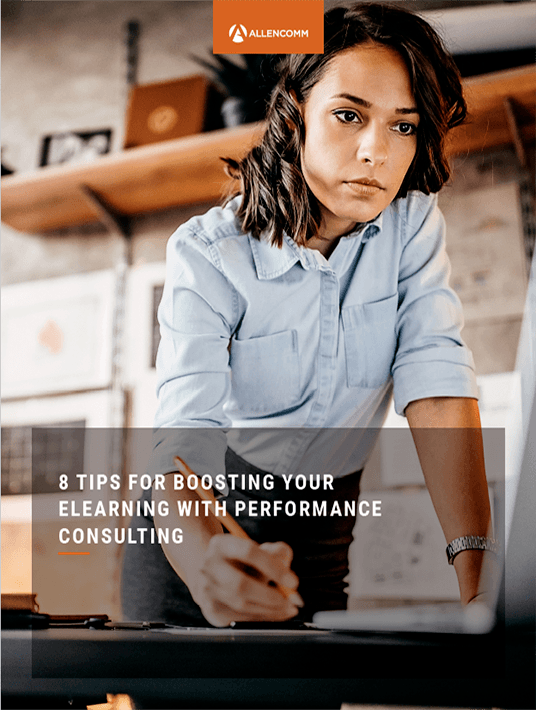How To Use Mentors For Measurement And Evaluation
Evaluating the impact of eLearning has always been a challenge for Learning and Development teams. While the Kirkpatrick model of evaluation may provide some guidance around the factors that are important to measure, the design of evaluative practices within our organizations tends to barely scratch the surface. Research by Brandon Hall suggests that 43% of organizations don’t measure the business impact of any of their employee training and development programs. It becomes quite difficult to claim that training has had an impact on learning, performance, or business objectives if there aren’t processes in place to gather and analyze data. Ideally, this can be done by integrating eLearning assets and Instructor-Led Training events with performance management and business operations platforms. Luckily, not all strategies for performance evaluation rely on the heavy lifting of business technology. There are a few strategies that center around mentors and managers that you can implement quickly.

The Role Of Mentors In Employee Performance Evaluation
It is important for everyone—mentors, managers, and learners alike—to be on the same page. Without clearly defined expectations, it’s much more difficult to evaluate progress. But employee performance evaluation mentors will also need structure in their approach to interactions with learners. Every trade has its tools and the same is true for proper evaluation. With assets like facilitator guides, task analysis worksheets, or activity planners, mentors can be more effective in directing the efforts of learners, while also recording more accurate data. Mentors should play a key role in recording informal learning activities through both quantitative and qualitative measurements. For instance, mentors can capture data, employee engagement, and confidence through interviews. Additionally, mentors can more easily capture valuable data around on-the-job performance through observations.
That being said, setting aside time for one-on-ones can be a challenge. It takes time away from work, and revenue-generating activities tend to take precedence over employee development. However, research on the impact of mentoring programs is clear: there are definitive improvements to employee satisfaction and retention [1]. So, this time should be protected by devoting time (and budget) to ensuring time is blocked off for continued development.
Incentive programs are another area in which mentors can play a key role. When your employees have their progress within the learning experience or performance on-the-job, a mentor of employee performance evaluation can help to track and meet out rewards. This can also help to improve accountability as mentors have visibility on both employee performance and can influence reward.
Employee Performance Evaluation Metrics: Beyond Methods
Employee performance evaluation metrics—desired results and the micro-behaviors that lead to them—must be integrated into your organization so that the learning culture can have a direction. To do this, you need a clear definition of assessment in your learning culture. While you may have ideas of your own over what a good definition of assessment might be, some good characteristics to start with are employee-owned and coach-driven.
What this means is that employee performance evaluation must be governed by sustainment and follow up. What this looks like at first is a very heavy top-down approach. Mentors and managers must drive the process through both encouragement and enablement. Essentially, managers must push their employees to pursue education while creating an environment to do so. Then, employee engagement will follow.
Although this means a lot of work and a heavy burden on middle management up front, it will not remain this way if done properly. As team members become more accustomed to the new learning culture in your organization, they will begin to take ownership of their learning experience.
That being said, for this transition to be effective, mentors will need their own training and support. Being able to accurately assess the gaps between performance and learning is a critical skill with which many mentors or managers may not be equipped. But, once they’re able to successfully identify these gaps, it becomes much easier to have an impact on learning and performance outcomes. Then, it comes down to implementing best practices in mentoring: development plans, career development, and regular performance reviews. All this will translate into a positive impact on your company’s training ROI.
Conclusion
In order to successfully implement a culture of learning, effective evaluative methods are a must. With a solid mentoring program, the challenge is more easily manageable. Mentors have a critical role in supporting eLearning, as well as bridging the gap between learning and employee performance. So, consider how mentors can help your organization move progressively toward your organizational goals. To learn more about employee performance evaluation, check out our eBook, 8 Tips For Boosting Your eLearning With Performance Consulting. Also, join the webinar to find out additional information about virtual learning best practices and more.
References:
[1] Nine in 10 workers who have a career mentor say they are happy in their jobs








